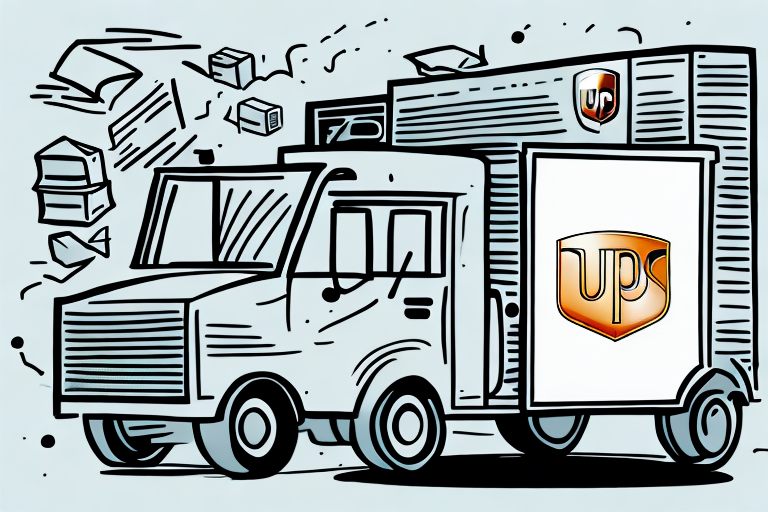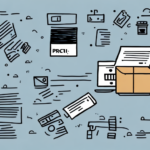Understanding UPS Store Return Shipping Rates
Return shipping can be a significant challenge for businesses, leading to not only lost sales but also high costs associated with managing return logistics. Effectively managing returns requires a clear understanding of how return shipping rates work, and no discussion of this topic is complete without exploring the various rates offered by the UPS Store. In this article, we'll provide an in-depth analysis of UPS Store return shipping rates, their importance, how to calculate them, and much more. Read on to learn everything you need to know about UPS Store return shipping rates.
Why is it Important to Understand UPS Store Return Shipping Rates?
The UPS Store is a popular option for return shipping due to its range of services that simplify the return process for both businesses and consumers. However, without a clear understanding of UPS Store return shipping rates, businesses may end up spending more on return logistics than necessary. Additionally, inaccurate rate calculations can lead to overcharging or undercharging customers, both of which can negatively impact profitability and customer satisfaction.
UPS Store return shipping rates vary based on factors such as package weight, size, and destination. Accurately measuring and weighing each package before shipping is crucial. Furthermore, researching and comparing UPS Store rates with other shipping options ensures that you're obtaining the best possible deal. By understanding UPS Store return shipping rates, businesses can reduce costs and enhance the customer experience.
What Are the Different Types of UPS Store Return Shipping Rates?
The UPS Store offers several types of return shipping rates, each with unique features and benefits:
- UPS Print Return Label: Allows customers to print a return label at home and drop off their package at any UPS location.
- UPS Electronic Return Label: Sends the return label directly to the customer's email, which can be printed or displayed on a mobile device.
- UPS Prepaid Return Shipping: Provides a prepaid shipping label, enabling customers to drop off their package at any UPS location or schedule a pickup.
- UPS Returns Exchange: Designed for businesses that need to exchange products with their customers.
- UPS Returns Flexible Access: Offers various return options, including drop-off at a UPS location, pickup by a UPS driver, or scheduling a pickup.
- UPS Returns Pack and Collect: Provides a prepaid shipping label and a box delivered to the customer's doorstep, facilitating easy packing and shipping of returns.
Each of these options caters to different business needs, allowing for flexibility and efficiency in managing returns.
How to Calculate UPS Store Return Shipping Rates
Calculating UPS Store return shipping rates involves several factors, including package weight, shipping destination, and the type of service chosen. UPS offers an online tool that helps businesses estimate shipping costs based on these variables, ensuring accurate budgeting and cost management. You can access this tool on the UPS website or through the UPS shipping software, making it easy to start calculating return shipping rates.
Factors That Influence UPS Store Return Shipping Rates
Several factors impact UPS Store return shipping rates, including:
- Package Weight: Heavier packages incur higher shipping costs.
- Package Dimensions: Larger packages may require additional handling fees.
- Shipping Destination: Rates vary based on domestic versus international shipping and the specific region.
- Service Level: Faster delivery options typically cost more.
- Return Shipping Option: Different return services (e.g., print label vs. prepaid) have varying costs.
Understanding these factors allows businesses to make informed decisions about the most cost-effective shipping options for their return logistics.
Pros and Cons of Using UPS Store for Return Shipping
Choosing the UPS Store for return shipping comes with several advantages and disadvantages:
Pros
- Reliable Tracking: Provides detailed tracking information to monitor shipments.
- Easy Access to Shipping Materials: Availability of various shipping supplies at UPS locations.
- Diverse Service Options: Multiple return shipping options to cater to different business needs.
- Global Reach: Ability to handle both domestic and international returns efficiently.
Cons
- Cost: Shipping fees can be higher compared to some competitors, especially for expedited services.
- Complexity: Navigating the various service options may be confusing for some businesses.
- Dependency on Physical Locations: Some services may require drop-offs at physical UPS locations, which can be inconvenient for certain customers.
Weighing these pros and cons helps businesses determine if the UPS Store is the right choice for their return shipping needs.
Understanding the Differences Between UPS Store and Other Return Shipping Options
When developing a return logistics strategy, it's essential to compare UPS Store with other shipping providers like USPS, FedEx, and DHL. Key differences include:
- Cost: Rates vary based on service levels and package specifications.
- Service Offerings: Each provider offers unique services and features tailored to different business needs.
- Delivery Times: Speed of delivery can differ significantly between providers.
- International Capabilities: Some providers may offer more robust international shipping options.
By understanding these differences, businesses can select the shipping provider that best aligns with their specific return logistics requirements.
How to Save Money on UPS Store Return Shipping Rates
Managing return shipping costs is crucial for maintaining profitability. Here are several strategies to reduce expenses:
- Utilize UPS Business Programs: Take advantage of customer loyalty programs or negotiated rates with UPS to lower shipping costs.
- Use Shipping Software: Implementing a shipping software platform can streamline the shipping process, reducing time and financial overhead.
- Optimize Packaging: Use appropriately sized packaging to minimize weight and dimensional fees.
- Consolidate Shipments: Grouping multiple returns into a single shipment can reduce overall costs.
Implementing these strategies can lead to significant savings on UPS Store return shipping rates.
Tips for Optimizing Your Return Shipping Process with UPS Store
Optimizing your return shipping process enhances efficiency and customer satisfaction. Consider the following tips:
- Provide Clear Return Instructions: Ensure customers understand the return process to minimize errors and delays.
- Automate Returns Management: Use automated systems to streamline the returns process, reducing manual intervention and errors.
- Develop a Comprehensive Return Policy: A clear return policy sets customer expectations and simplifies the returns process.
- Leverage Technology: Utilize third-party logistics (3PL) providers and software solutions to enhance returns management.
- Analyze Return Data: Use analytics to identify trends and areas for improvement in the returns process.
These practices help create a seamless and efficient return experience for both businesses and customers.
Common Mistakes to Avoid When Using UPS Store for Return Shipping
While the UPS Store is a reliable option for return shipping, certain common mistakes can hinder its effectiveness:
- Unclear Return Instructions: Lack of clear guidance can lead to incorrect returns and increased costs.
- Limited Return Options: Offering only one return method may inconvenience customers and reduce satisfaction.
- Neglecting to Use Technology: Failing to implement automated systems can result in inefficiencies and errors.
- Inadequate Packaging: Poor packaging can lead to damaged returns and increased logistical costs.
Avoiding these mistakes ensures a more efficient and cost-effective return shipping process.
Best Practices for Managing Your Returns with UPS Store
Implementing best practices for return management can significantly enhance efficiency and customer satisfaction:
- Establish a Clear Return Policy: Define the terms and conditions of returns to set customer expectations.
- Offer Multiple Shipping Options: Provide various return methods to accommodate different customer preferences.
- Automate the Returns Process: Use technology to streamline and manage returns efficiently.
- Utilize Analytics: Analyze return data to identify patterns and optimize shipping strategies.
- Train Staff: Ensure that team members are knowledgeable about the return process and can assist customers effectively.
Adopting these best practices helps businesses manage returns more effectively, leading to cost savings and improved customer loyalty.
Case Studies: Real-World Examples of Companies That Benefited from Using UPS Store for Return Shipping
Examining real-world examples provides valuable insights into the benefits of using the UPS Store for return shipping:
Case Study 1: E-Commerce Retailer Reduces Shipping Costs
An online retail company implemented UPS Store's return shipping solutions and was able to reduce their shipping costs by nearly 50%. By leveraging UPS's prepaid return labels and optimizing their packaging, the company saw significant savings while maintaining customer satisfaction.
Case Study 2: Software Company Enhances Customer Satisfaction
A software company introduced free return shipping through the UPS Store, resulting in increased customer satisfaction and loyalty. The easy return process encouraged more purchases and reduced the barrier for customers to try new products.
These case studies demonstrate the tangible benefits of integrating UPS Store return shipping solutions into business operations.
Frequently Asked Questions About UPS Store Return Shipping Rates and Policies
Businesses often have questions regarding UPS Store return shipping rates and policies. Here are some common inquiries:
- How do I estimate shipping rates? Use the UPS online rate calculator by entering package details and destination.
- What return shipping options are available? Options include print labels, electronic labels, prepaid shipping, and more.
- How can I track return shipments? Utilize the UPS tracking system by entering the tracking number provided with the shipment.
- Are there any volume discounts available? Yes, businesses can negotiate rates with UPS based on shipping volume.
Addressing these questions helps businesses make informed decisions about their return logistics strategy.
Comparing the Cost and Convenience of UPS Store Return Shipping with Other Options Like USPS, FedEx, etc.
While the UPS Store is a leading choice for return shipping, comparing it with other providers like USPS, FedEx, and DHL is essential:
- Cost: USPS often offers lower shipping rates for smaller packages, while FedEx and DHL may provide competitive rates for expedited services.
- Service Levels: UPS and FedEx provide a variety of service levels, including next-day and international shipping, whereas USPS primarily focuses on standard and expedited options.
- Reliability: UPS and FedEx are renowned for their reliability and extensive tracking capabilities.
- International Shipping: DHL specializes in international shipping, offering a broader global network compared to USPS.
Evaluating these factors based on your business needs will help determine the most suitable return shipping provider.
How to Ship International Returns with UPS Store
International return shipping requires careful planning to navigate regulations and ensure timely delivery. Here are some tips:
- Understand International Shipping Regulations: Familiarize yourself with the customs requirements and import/export regulations of the destination country.
- Accurate Address Information: Ensure that all address details are correct to avoid delays or lost shipments.
- Use Appropriate Documentation: Complete necessary customs forms accurately to facilitate smooth processing.
- Leverage Shipping Software: Utilize platforms that integrate with UPS to automate and streamline the international return process.
- Consider Shipping Costs and Timeframes: Balance the need for cost-effective shipping with the requirement for timely returns.
By following these tips, businesses can manage international returns more effectively, reducing delays and additional costs.
Using UPS My Choice to Streamline Your Returns Process with the UPS Store
UPS My Choice is a free service offered by UPS that enhances shipment management for both businesses and customers. By integrating UPS My Choice into your returns process, you can:
- Track Shipments: Monitor the status of return packages in real-time.
- Modify Delivery Schedules: Adjust delivery times to accommodate specific needs.
- Receive Alerts: Get notifications about package deliveries and pickups, ensuring timely returns.
- Enhance Customer Experience: Provide customers with greater control and visibility over their return shipments.
Utilizing UPS My Choice streamlines the returns process, making it more efficient and user-friendly.
How to Track Your Shipments and Returns with the UPS Store Tracking System
The UPS Store offers a robust tracking system that allows businesses to monitor the progress of their return shipments. To track shipments:
- Obtain a Tracking Number: Each return shipment is assigned a unique tracking number.
- Use the UPS Online Tracking Tool: Enter the tracking number on the UPS website or through the UPS mobile app to view the shipment status.
- Set Up Notifications: Receive automatic updates on shipment status changes, such as pickup, transit, and delivery.
- Analyze Tracking Data: Use tracking information to identify any delays or issues in the returns process and address them promptly.
Effective tracking ensures that returns are managed efficiently and any potential issues are resolved quickly.
The Benefits of Using a Third-Party Logistics Provider (3PL) Like the UPS Store for Your Returns Management Needs
Partnering with a third-party logistics provider (3PL) such as the UPS Store offers numerous advantages for managing returns:
- Expertise: 3PL providers have specialized knowledge and experience in handling return logistics efficiently.
- Scalability: They can scale return operations up or down based on business needs without significant investment.
- Technology Integration: Access to advanced shipping and tracking technologies that streamline the returns process.
- Cost Efficiency: Leveraging a 3PL can reduce operational costs associated with managing in-house returns logistics.
- Focus on Core Competencies: Outsourcing returns management allows businesses to concentrate on their primary operations.
Using a 3PL like the UPS Store enhances return logistics management, providing efficiency and cost savings.
Conclusion: Why Understanding and Optimizing Your Use of the UPS Store for Return Shipping is Critical for Modern Businesses
Effective management of return logistics is essential for businesses of all sizes, and the UPS Store is a leading option for many. To maximize the benefits of partnering with UPS Store, businesses must understand how return shipping rates work, the variety of services offered, and best practices for managing returns efficiently. By implementing the strategies and insights provided in this article, businesses can optimize their relationship with the UPS Store, ensuring that their return logistics operate seamlessly and contribute positively to overall business success.






















